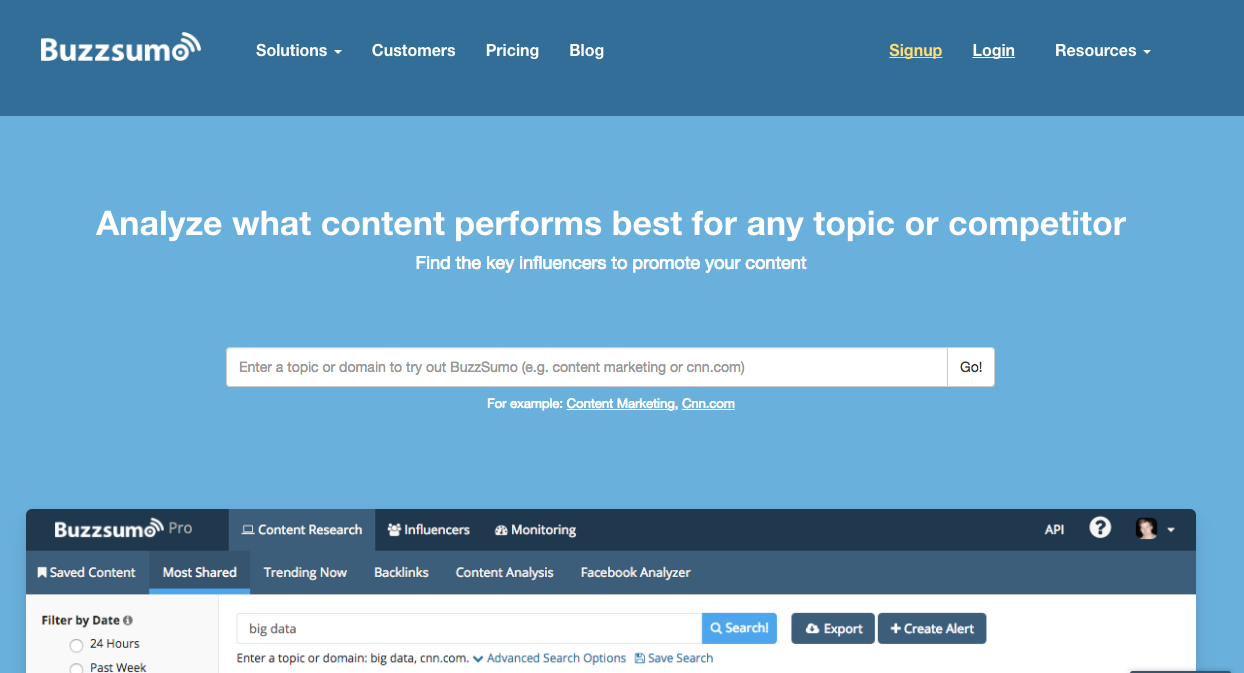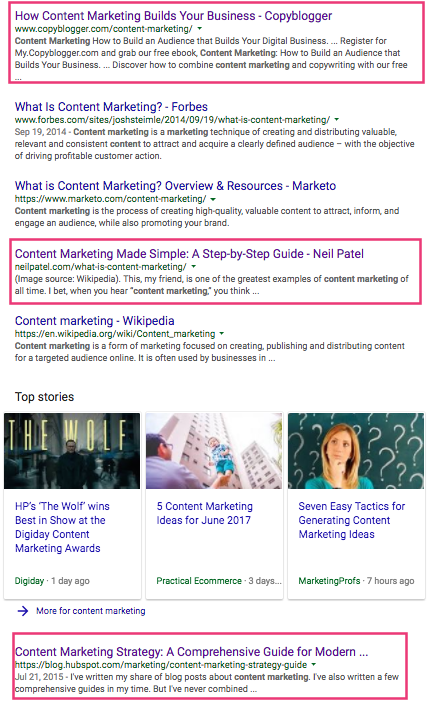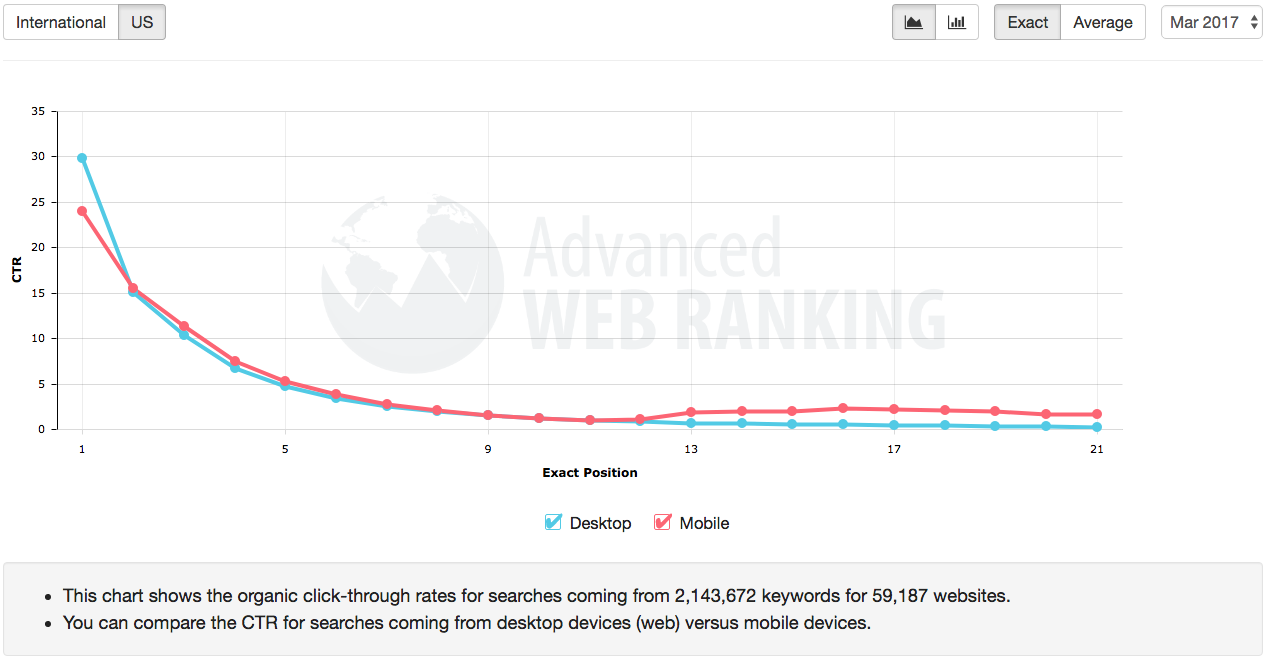Why would you want to consider non-authority sites? Check out existing links (5 minutes) The #1 best way to get a link from a site is to find out what kinds of links are already on the site. For this step, use a link audit tool like Screaming Frog to find the outbound links on any page you find. Check for broken links (3 minutes) You’ve probably seen this strategy over and over again, but there’s a good reason: It works. Find influencers in your niche (3 minutes) This is similar to finding authority sites in your niche, but it’s also very different. Twitter requires little to no effort, and I’ve found that influencers are more willing to share content on Twitter than on any other social media platform. Let’s visit Jay’s Twitter and look on the right side at the “You may also like” section: These are all people that Jay is associated with or people who are in similar niches. If you’re new to finding link opportunities, I recommend using Twitter. If a site has linked to you in the past, it’s likely that you can get more links from that site. It’s easy to average 50 opportunities each time you use strategy.

Even if you’re not an expert SEO, you know how important backlinks are.
They’re the meat and potatoes of any SEO strategy.
And believe it or not, there are hundreds of link opportunities out there waiting for you.
You don’t have to be a superhero to find them. There are no special skills required. You just need some time.
Here’s the thing: There are tons of sites out there that desperately want to give out backlinks.
The problem? There’s a severe shortage of high-quality sites to give links to.
I know from experience. I get dozens of backlink requests each week, but most of the sites don’t match my quality standards.
Believe me, I love giving out links. But I don’t give them out to everyone. A site has to be exceptional to earn a link.
That’s where you come in.
If you consistently put in the effort to create an authority site, you’ll get links. It’s as simple as that.
You’re probably wondering: “Where do I find all of these links?”
I’ve written several articles on this topic, but sometimes you need the CliffsNotes.
That’s why I’m going to show you how to find a whopping 50 link opportunities in 20 minutes or less.
These are super actionable strategies, and they’re the ones I’ve found to be extra effective for link building.
Find the authority sites in your niche (5 minutes)
“Authority” is somewhat of a buzzword these days, but it still holds a lot of power.
If you’re looking to make a splash and drive serious traffic, you need to aim to get links from the big sites in your niche.
That’s why I recommend starting out by looking at authority sites.
You know, one thing I see wrong with a lot of link strategies is a lack of ambition.
Many people act like getting a link from an authority site is like getting an interview with a celebrity. They think it could never happen in a million years.
But I have good news: That’s not the case at all.

Just because a site is well known doesn’t mean it’s reluctant to hand out links to the little guys. In fact, it happens all the time.
You don’t need to have thousands or even hundreds of readers to land a link. All you need is an awesome resource.
That said, start by making a list of the authority sites in your niche.
I like using Buzzsumo for this.

Type in a keyword related to your niche and see what sites pop up:

You can also do a simple Google search. Usually, searching using your focus keyword will bring up authority sites.
For example, in content marketing, some of the big names are Copyblogger, HubSpot, and this site (not to brag). Sure enough, when you search “content marketing,” all three sites come up on page 1:

I’d also look at pages 2 and 3 since the first page can often be cluttered with featured snippets and media.
As a rule of thumb, the more general your keyword is, the more SERPs you’ll want to look at.
Try to find 10 to 15 authority sites. Put them all in a spreadsheet.
You can also look for sites that aren’t authority but have a wide audience. You can visit Moz’s Open Site Explorer to get a sense of how popular the site is.
Pay extra attention to the site’s DA, PA, and the number of total links. You can find them on the left side of the first box.

Why would you want to consider non-authority sites? Less well-known sites can still bring you benefits, and you don’t have to be an authority to have a huge audience.
For example, when you search “content marketing” on Google, Duct Tape Marketing doesn’t show up until page 11:

You’d probably write it off, but it’s actually a wildly popular site, and it has great rankings in OSE:

So don’t assume that the best sites are always on page 1.
You could spend a lot of time on this step, but you can also do this super fast.
I suggest that you spend about 5 minutes doing this and write down all the sites you find.
Check out existing links (5 minutes)

The #1 best way to get a link from a site is to find out what kinds of links are already on the site.
If your content matches what a site is linking to, you have an excellent chance of getting a link yourself.
But if your content is very different, you’ll probably need to look elsewhere.
Finding outbound links and visiting those links gives you a solid idea of what a site is looking for.
There’s no one right way to do this. I like to take a look at the last 5 or so articles and check out the links.
Don’t just peek at the linked domains. Really analyze the links and the type of content they have.
Keep in mind that a site may not have any outbound links. This Copyblogger post has only one:

And this SaaStr post has none:

In these cases, it’s going to be difficult to land a backlink.
I hate to be the bearer of bad news, but it’s the truth. Not every site you’ll find will be an opportunity to grab links.
That said, for every site that doesn’t have many links, there are 5 more that are backlink hotspots.
So let’s look at a site that does have several outbound links. Take this Backlinko post:

There are a few types of links in this article.
There’s a link to a HubSpot post that gave Brian an idea:

There’s a link to a study on clickthrough rates:


There are only two more links, and they’re both Backlinko posts.
Here’s where you have to…

COMMENTS